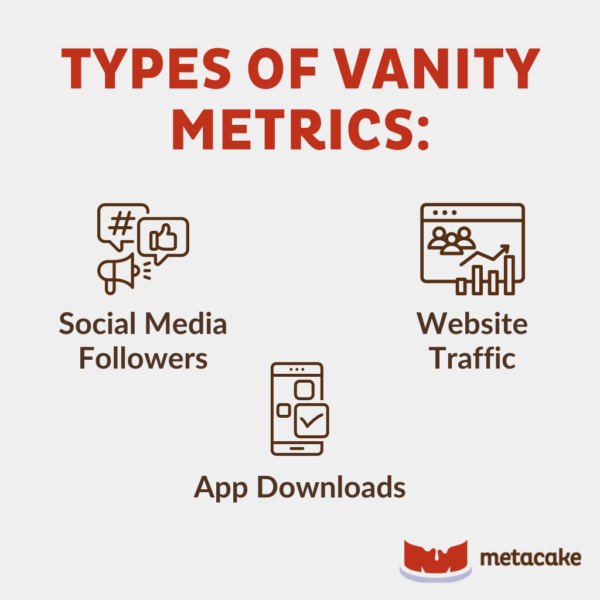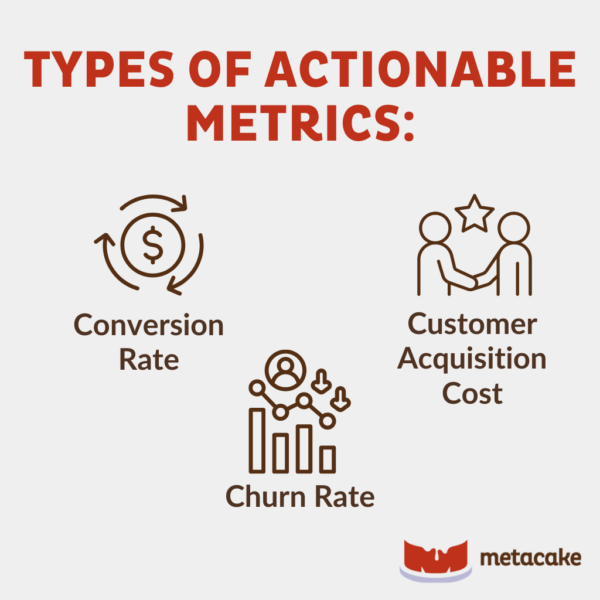The distinction between vanity metrics and actionable metrics is critical knowledge for any ecommerce business owner to understand.
But what are they? In this article (vanity metrics vs. actionable metrics), we’ll dive into their definitions and what they can mean for you and your ecommerce business.
Vanity Metrics vs. Actionable Metrics: What You Need to Know
Running an ecommerce business requires a lot of maintenance. And there’s so much data to keep track of! Have you thought about metrics (vanity and actionable)? Do you know what they are and what differentiates them?
Let’s take a closer look at vanity metrics vs. actionable metrics and see which is best for your ecommerce business.

Vanity Metrics
Vanity metrics are the metrics that everyone talks about. They’re the ones that appear spectacular on the surface but don’t always provide useful information about a company’s health or success.
They’re frequently easy to quantify and make a company feel good about itself, but they don’t provide meaningful suggestions for improvement.
Let’s take a look at some examples of vanity metrics:
- Social Media Followers: Having a large following can be impressive, but it doesn’t always lead to engagement or conversions.
- Website Traffic: High traffic numbers look good, but if visitors don’t convert or engage with your content, it’s not worth much.
- App Downloads: High quantities of downloads seem successful, but that doesn’t mean users are using the app frequently or finding value in it.
Vanity metrics can also manifest in other areas of business, such as email marketing, where the emphasis may be on the size of the email list rather than the open rates, click-through rates, or conversions generated by those emails.
While these vanity metrics can provide a sense of accomplishment, they often don’t correlate with the success or growth of an ecommerce business in any beneficial way.
These metrics may create a false sense of success in the short term and often fail to deliver sustainable results or contribute to long-term growth. They can be misleading, causing a company to focus its attention in the wrong areas.

Actionable Metrics
Actionable metrics are a whole different animal. They’re the “meat and potatoes” of metrics. They provide specific and valuable insights that can guide decision-making and drive improvements.
These metrics are tied directly to the core objectives of the company and provide a clear indication of what actions need to be taken to improve performance.
As their name implies, they’re specifically chosen because they provide actionable insights that guide decision-making and help achieve business goals. They’re tied to key performance indicators (KPIs) that are critical for the success and growth of the business.
Now let’s take a look at some examples of actionable metrics:
- Conversion Rate: This is the percentage of visitors who complete a desired action — perhaps purchasing or subscribing to a newsletter. A poor conversion rate highlights opportunities for improvement, like enhancing the user experience or fine-tuning marketing materials.
- Customer Acquisition Cost: This metric calculates how much it costs to acquire a new customer. By comparing this cost to the lifetime value of a customer, businesses can determine the effectiveness of their marketing and sales efforts.
- Churn Rate: This is the percentage of customers that discontinue using a product or service during a specific time period. High churn rates may suggest problems with product satisfaction or customer service that must be addressed.
Actionable metrics are often compared against benchmarks, targets, or past performance data. This comparison helps businesses understand whether they’re on track to meet their goals and identifies areas for improvement.
Actionable metrics provide insights that can be used to make informed decisions and drive tangible improvements in business performance. Unlike vanity metrics, they focus on what matters most to the success of the business and help companies prioritize their efforts effectively.
To avoid falling into the trap of vanity metrics, select and prioritize KPIs that are aligned with your company’s goals and objectives. These indicators should provide actionable insights that guide decision-making and produce real-world business results.
So, Which Is Right for You?
While there’s no denying the shiny appeal of vanity metrics, actionable metrics provide you with more bang for your buck!
Vanity metrics often lack the meaningful insights into business performance that actionable metrics provide. Actionable metrics can guide decision-making and drive improvements in key areas of your business; therefore, it’s crucial to prioritize these metrics.
So, it’s no secret that when it comes to vanity metrics vs. actionable metrics, we choose actionable! Businesses that focus on metrics that genuinely matter can effectively monitor their progress and make informed changes to their plans for long-term growth and success.
If you’re still on the fence and need more guidance, give us a shout!
